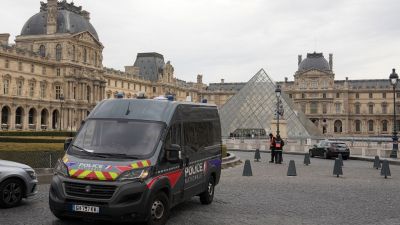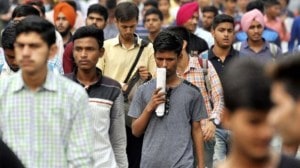Why Gujarat HC rejected pleas against demolition of suspected Bangladeshi immigrants’ homes in Ahmedabad
What is the case, and what was the High Court’s rationale? How was it linked to the Pahalgam terror attacks? We explain.
 Demolitions underway at Chandola talav na Chhapra in Ahmedabad, on April 29. (Express photo by Bhupendra Rana)
Demolitions underway at Chandola talav na Chhapra in Ahmedabad, on April 29. (Express photo by Bhupendra Rana)Five months after the Supreme Court ruled on extra-judicial demolitions of properties by the state, the Gujarat government conducted a “mega demolition drive” in Ahmedabad last week against the allegedly illegal settlements of Bangladeshi immigrants, who entered the country illegally.
Residents of the city’s Chandola Lake area moved an urgent petition, questioning the bulldozing of houses where they claim to have lived for decades. However, the Gujarat High Court rejected the plea for a stay, citing an exception in the November 2024 guidelines of the apex court.
What is the case of the recent demolitions, and what was the High Court’s rationale? We explain.
What were the Chandola Lake demolitions?
In the second half of 2022, the Gujarat government began a drive to demolish encroachments along the coastline districts, citing security reasons.
More recently, an affidavit filed before the Gujarat High Court, signed by Deputy Commissioner of Police (Crime) Ajit Rajiaan, alleged certain illegal activities around Chandola Lake. “Over time, the lake came to be used for a variety of illegalities, including harbouring Bangladeshi aliens and other anti-national elements… It is also stated for the record that, recently, four Bangladeshi immigrants belonging to an al-Qaeda module having links to Chandola Lake were also arrested,” it said.
After the Pahalgam terror attack on April 22, in which 26 tourists, including three Gujaratis, were killed, the police launched a crackdown on Bangladeshi nationals in the state. In its reply before the HC, the state government cited “public order, safety and national security.
On April 26, the demolition drive began at 3 am, where 890 people, including 219 women and 214 children, were picked up from the Danilimda side of Chandola Lake on suspicion of being “foreign immigrants residing illegally” in the city.
They were first assembled at a football ground, after which most of the men were paraded through the roads of Ahmedabad for four kilometres until they reached Gaekwad Haveli. Most were let go after they produced IDs to prove their Indian nationality. On April 28, bulldozers started lining up outside the lake area. The next day, as many as 4,000 structures, including both homes and shops, were razed, as claimed by the Ahmedabad Municipal Corporation (AMC).
How did the court respond to the petitioners’ plea?
On April 29, the Gujarat High Court noted that Chandola Lake is “admittedly a notified water body” and that “no civic body has ever given any development permission to any person for construction” in the area.
As it rejected the residents’ plea against the drive, the HC noted that staying the state government’s demolition of homes and structures “would amount to perpetuating illegal occupation and construction” and go “against the principles of law”.
The oral order of Justice Mauna Bhatt of the Gujarat High Court, noted that the case involved several allegations by both the petitioners and the state. These included references to “alleged criminal activities” at the site, but the court was only considering the request related to “demolition and rehabilitation.”
The court addressed two main points from the petition: first, that residents were not served demolition notices, and second, that they had a right to resettlement. The court rejected the contentions, stating that since the lake was a “notified water body” and had no development permissions ever given, the argument about receiving notice “does not merit acceptance”.
On the claim that the residents should have been given alternate homes before demolition under the state’s rehabilitation policies, the court pointed out that “no documents” had been produced with the petition to show “long occupancy”, but also stated that it is “open for the petitioners to make individual applications, if they are so entitled,” and submit the required documents to the authorities.
What was the reference to the SC judgment?
In 2024, the SC gave its judgment in a case where petitioners challenged the house demolitions by the state governments in Rajasthan and Madhya Pradesh. In both cases, the demolitions happened after Muslim tenants allegedly committed crimes that triggered communal tensions.
The court laid down guidelines for such demolitions to emphasise transparency and give the accused and their family sufficient time to handle their affairs. However, the SC clarified that the guidelines will not apply to “an unauthorised structure in any public place such as road, street, footpath, abutting railway line or any river body or water bodies and also to cases where there is an order for demolition made by a Court of law”.
Justice Bhatt also cited another judgment from the top court last year, saying that “an illegal structure cannot be legitimised or protected solely under the ruse of the passage of time, or citing inaction of the authorities, or by taking recourse to the excuse that substantial money has been spent on the said construction.”



- 01
- 02
- 03
- 04
- 05



































